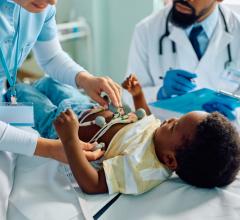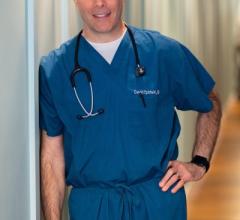
New study finds children treated for MIS-C had normal heart function within three months after their first symptoms.
September 26, 2022 — Kawasaki disease (KD) is the leading cause of acquired heart disease in children in developed countries, yet it has long defied easy understanding, with diverse traits and multiple triggers, and an unknown cause.
During the COVID-19 pandemic, Kawasaki disease case rates declined but a different illness emerged: multisystem inflammatory syndrome in children or MIS-C, which shares many symptoms with KD, but is linked to a single pathogen, the SARS-CoV-2 virus that causes COVID-19.
In a new study, published September 20, 2022 in Lancet Digital Health, a national team of scientists led by researchers at University of California San Diego School of Medicine have created a machine-learning algorithm for diagnosing both MIS-C and KD.
“For 40 years, the Kawasaki research community has tried to create a diagnostic test for KD and failed,” said co-senior study author Jane C. Burns, MD, a pediatrician at Rady Children’s Hospital-San Diego and director of the Kawasaki Disease Research Center at UC San Diego School of Medicine.
“But now, in just the space of 18 months, we have created a physician support tool that differentiates MIS-C from KD in children using simple test results and five features of the physical exam that any health care provider, clinic or hospital can do, with accuracy exceeding 90 percent.”
MIS-C, KD and COVID-19 share similar underlying molecular patterns and immune responses. A published study earlier this year by UC San Diego scientists found that all three inflammatory disorders were on the same immune response continuum, with MIS-C being a more severe version of the response than KD.
MIS-C and KD share many symptoms, including fever, rash and bloodshot eyes, but KD can also lead to coronary artery aneurysms and heart attacks if untreated. It remains unclear how MIS-C affects children in the long-term, but early data suggest complete recovery. The condition develops only in some children, infected by SARS-CoV-2. With both KD and MIS-C, however, early diagnosis is crucial but physicians have lacked any precise way to differentiate MIS-C from KD or other acute febrile childhood illnesses.
The new study used data from 1,517 patients diagnosed with MIS-C, KD or other febrile illnesses at Rady Children’s between January 1, 2009 and June 7, 2021, with additional patient data from Connecticut Children’s Medical Center in Hartford, CT (16 patients) and Children’s Hospital Los Angeles (50 patients).
A novel deep-learning algorithm, dubbed KIDMATCH and developed by the study’s first author Jonathan Y. Lam, a PhD candidate in the lab of Shamim Nemati, PhD, associate professor of medicine at UC San Diego School of Medicine, was used to compare MIS-C and KD using patient age, the five classic signs of clinical KD and 17 laboratory measurements.
“Deep-learning algorithms have shown high performance capabilities in industrial applications, such as voice recognition or machine translation, and are good at identifying multiplicative risk factors. For example: the interaction between immunosuppression and hypothermia in the presence of an infection that may be indicative of risk,” said Nemati.
Nemati also noted the benefit of overcoming the issue of biased datasets in developing machine learning.
“One of the main sources of bias is lack of diversity in the training dataset, which causes a model to work better on some patient populations than others. Building a diverse training population that leverages national datasets, as was done for this project, helps to mitigate the bias of the model.
“To further address bias the machine learning experts included a boundary around the algorithm, which enables the model to identify whether it has enough prior knowledge of similar cases to reliably determine whether a patient is at risk for MIS-C. If the algorithm finds the data lacking, it will flag the case as an indeterminate result. These flags reduced false alarms for similar machine learning models by 75 percent. This reduction of false alarms can greatly reduce the burden of resources or time spent on a false diagnosis.”
The algorithm’s conclusions were externally validated on patient cohorts from Boston Children’s Hospital, Children’s National Hospital in Washington, D.C. and the CHARMS Study Group Consortium of 14 hospitals in the United States.
UC San Diego was one of eight institutions in the nation to receive funding from the Eunice Kennedy Shriver National Institute of Child Health and Human Development to develop approaches to identifying children at high risk for MIS-C. Funded through a RADxTech commercialization grant, the university is now working with a startup company called Healcisio Inc., formed by Nemati and colleagues, to pursue emergency use authorization from the U.S. Food and Drug Administration.
“The hope here, of course, is that KIDMATCH can help front-line clinicians distinguish between MIS-C, Kawasaki disease and other febrile illnesses so that they can provide earlier, appropriate treatment and prevent severe complications,” said co-senior study author Nemati.
KD occurs with varying degrees of prevalence in different parts of the world. In the United States, it is estimated there are between 4,000 and 5,000 diagnosed cases each year, with an incidence rate of 15 to 20 cases per 100,000 children under the age of five. Experts broadly believe the disease is caused by an aerosol that could contain parts of a virus, bacteria or fungi, but there is also a hereditary aspect. Younger siblings of a KD patient have a 10-fold increased risk of KD because of a shared genetic predisposition. When children with Kawasaki disease grow up, their children are at higher risk of developing KD. MIS-C is a serious but rare condition, often requiring hospitalization. It occurs in one of approximately 3,000 to 4,000 children and adolescents who have a SARS-CoV-2 infection. Most children with MIS-C do not have any reported underlying medical conditions, although many are obese.
For more information: https://ucsd.edu/
Related Content on MIS-C:
Kawasaki-like Inflammatory Disease Affects Children With COVID-19
Case Study Describes One of the First U.S. Cases of MIS-C
NIH-funded Project Wants to Identify Children at Risk for MIS-C From COVID-19
New Study Looks at Post-COVID-19 Emerging Disease in Children
The Cardiovascular Impact of COVID-19
VIDEO: Example of a Multisystem Inflammatory Syndrome in Children (MIS-C) Pediatric Echocardiogram
NIH-funded Project Wants to Identify Children at Risk for MIS-C From COVID-19
Related COVID-19 in Children Content:
Kawasaki-like Inflammatory Disease Affects Children With COVID-19
How COVID-19 Affects the Brain in Neuroimaging
CT Findings of Coronavirus in Children Often Negative


 March 14, 2025
March 14, 2025 








